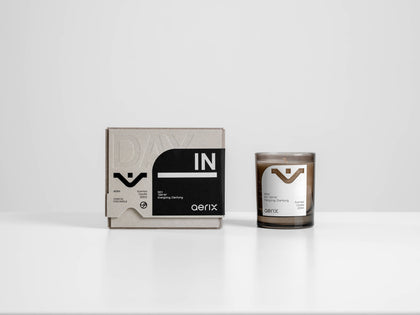

Introduction
In recent years, whether scented candles can cause cancer has been a concern for many fragrance enthusiasts. Numerous news articles and experts have warned about the potential carcinogenicity of scented candles. Do scented candles really pose a cancer risk? To provide consumers with a better understanding, we have compiled research from both domestic and international sources to unveil the truth about the potential carcinogenicity of scented candles.
Ingredients of Scented Candles
Wax Materials: Soy Wax, Paraffin Wax, Beeswax, Coconut Wax
Among these waxes, paraffin wax is the most controversial. A study in the "Journal of Regulatory Toxicology and Pharmacology" found that using scented candles with paraffin wax under normal conditions does not pose any health risks. The study replicated the conditions of candle use in typical households and found that the highest estimated emissions of fragrance, formaldehyde, and benzene were well below the limits set by the World Health Organization.
Under what conditions could burning paraffin wax-scented candles be harmful?
Researchers from the Monell Chemical Senses Center indicated that burning 12 candles at once in a closet might pose a risk, but this scenario is unlikely for most people.
No actual studies suggest that burning paraffin wax in scented candles could be harmful, especially when reputable brands like Jo Malone and Diptyque use a blend of paraffin and soy wax to enhance fragrance longevity.
Fragrance materials: Fragrance Oils vs. Essential Oils

Another factor contributing to the potential carcinogenicity of scented candles is the use of fragrance oils. However, fragrance oils are present in various scented products, including cleaners, perfumes, toilet fresheners, and skincare products. The major issue with fragrance oils lies in their diversity, as each oil consists of numerous compounds. While we know which compounds are harmful, we cannot identify the potential harm of every single compound.
Why use fragrance oils? For instance, rose essential oil is steam-distilled, requiring 9 kilograms of rose petals for a 5-milliliter bottle, making it costly and season-dependent. The use of fragrance oils becomes inevitable for commercializing scented products.
Laboratory-made fragrance oils may not be harmful, and while some people can distinguish between fragrance oils and essential oils, it's challenging for individuals to identify which fragrance oils are absolutely harmful. Those concerned can consider making scented candles with essential oils, but the scent throw of may not match that of fragrance oils.
(Read More: DIY Scented Candle: A Detailed Guide! Even Beginngers Can Make it! – Aerix Co)
Proper Use of Scented Candles Does Not Cause Cancer
Proper use of scented candles does not cause cancer. The below are some guidance for using scented candles correctly to make sure your utilize the candles safely.
Trim the Wick Every Time
Trimming the wick is not only to prevent creating a "tunneling" candle and black smoke but also to avoid burning the mushroom head. The "mushroom head" or carbonization produced by the burning wick of scented candles, when burned again, can release toxic substances. Regularly trimming the wick ensures a stable burning quality.
Ventilation and Burn Time
Burning anything can produce harmful substances. Burning candles in well-ventilated spaces can reduce the potential concentration of emissions, significantly lowering the risk.
Choose Reputable Brands
How can you avoid the potential carcinogenicity of scented candles? For consumers, choosing reputable fragrance brands is crucial. EYECANDLE uses imported safe fragrance oils and the best plant-based wax, ensuring stable burning without producing black smoke, making it non-toxic and safe for use!
Conclusion
Many studies indicate that when scented candles are used correctly, there is no cancer risk. At most, burning scented candles contributes to increasing room humidity. The main consideration in the market's avoidance of using pure paraffin wax in scented candles is based on consumer perception and the significant drawback of producing black smoke.
Additionally, burning paraffin wax releases carbon dioxide and other harmful substances such as benzene and formaldehyde, posing subtle threats to health.
Aerix and EYECANDLE's co-brading Day In and Day Out scented candles use a special blend of plant-based wax, burning without producing black smoke, maintaining fragrance longevity, and ensuring safety.




